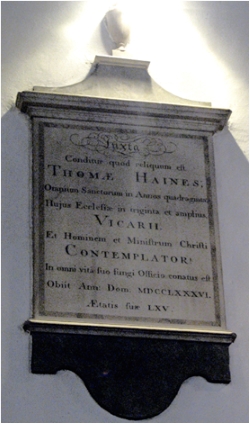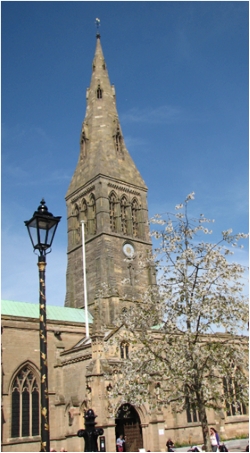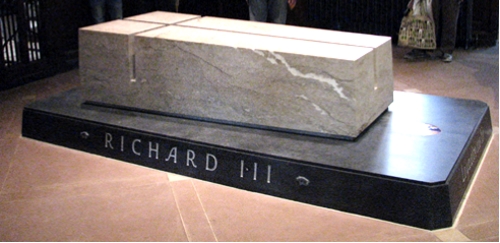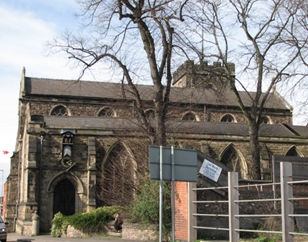|
Thomas Robinson (1749-1813)
|
|
 |




John Newton's Diary, 18 March 1775 |
 |
Mr Robinson
the Minister, whom the Lord has placed at Leicester,
apparently with great advantages, and a prospect of much success. |
|
Newton informed John Thornton he had heard “that Mr Robinson preaches the gospel at Leicester... Leicester is a dark place, but if the Lord is pleased to continue Mr Robinson there, who knows but that wilderness may soon blossom like the rose!”[1]
[1] 17 April 1774
|
 St Martin's
St Martin's
|
Thomas Robinson (1749-1813)
Born in Wakefield on 29 August 1749, Thomas Robinson was about to leave for Trinity College, Cambridge in 1768 when a poor shoemaker remarked, if he were going to be a clergyman, then “I hope you will study your Bible, that you may be qualified for feeding Christ’s flock with the bread of eternal life.”[1]
Robinson was much affected by this, and by later reading Hervey’s Theron and Aspasio.[2] He found fellowship with the likes of Charles Simeon, Wiliam Farish and Henry Venn, who by then had the living in nearby Yelling. Robinson excelled as an all-rounder in scholarship, and served as curate in Witcham and Wickford, a few miles north of Cambridge from 1772, where he included hymn-singing in his services.
He happened to be passing through Leicester during an election, and was so disgusted with the scenes he witnessed, that he “had privately whispered a prayer to God that it might never be his portion to reside at Leicester”.[3]
A colleague successfully argued with him that degeneration suchas he had observed would make it the very place most in need of his help.
Robinson accepted the curacy of St Martin’s (now the cathedral, where the remains of Richard III are buried), and All Saints in Leicester. His vicar was Thomas Haines.
Robinson's first wife, Mary Boys, died in 1791. In 1797 he married the widow of Dr James Gerard of Wadham College, Oxford.
He was licensed as Tuesday Evening Lecturer to St Mary de Castro in June 1778, and instituted vicar at the same church in December 1778.
For more details on Thomas Robinson see the biography by his close friend Edward Thomas Vaughan, Some Account of the Reverend Thomas Robinson, 1816 – currently available for free download on googlebooks.
Endnotes:
[1] New Evangelical Magazine and Theological review, June 1817, vol 3, pp 160-6, 'Memoir of the Rev Thomas Robinson, MA, Late Vicar of St Mary’s, Leicester'
[2] James Hervey, Theron and Aspasio, or a series of Letters upon the most important and interesting Subjects, 1755
[3] Edward Thomas Vaughan, Some Account of the Reverend Thomas Robinson, 1816, pp54-5 |

memorial
in St Martin's
to Robinson's vicar
Thomas Haines
|
 St Martin's today
now
St Martin's Cathedral
St Martin's today
now
St Martin's Cathedral
|
 |
where Richard III lies buried
|
Newton travelled to Leicester,
arriving on Friday 17 March 1775.
He lodged with Mr Moore,
a wholesale hosier.
The next morning he walked and breakfasted with Robinson. |

All Saints |
|
Newton quickly made friends with Robinson’s colleagues:
William and Thomas Ludlam,
Joseph Wheatley, Mr Miles, John Moore, the Blakesleys of Hinkley,
and Flude – “an excellent man, a Baptist”.
|
 The friendship between Newton and Robinson blossomed. The friendship between Newton and Robinson blossomed.
Newton’s Diary, Monday 26 June 1775:
“In the afternoon Mr Robinson of Leicester called,
we soon set the bells to give notice of preaching.”
Olney church bells
|
Newton returned to Leicester in:
April/May 1777
April/May 1779
and June 1792 |
|
|
|
|
|
|
|
Marylynn Rouse, 20/05/2015
|
|
|
|